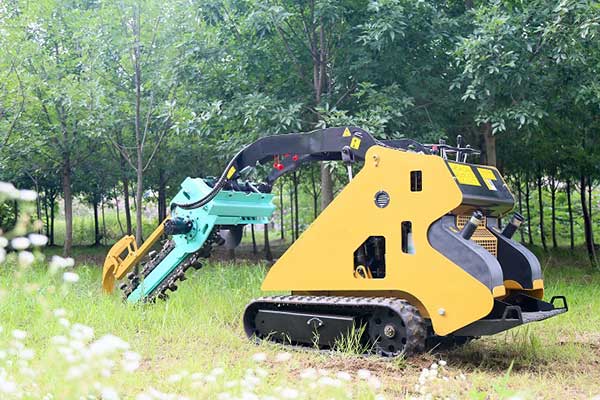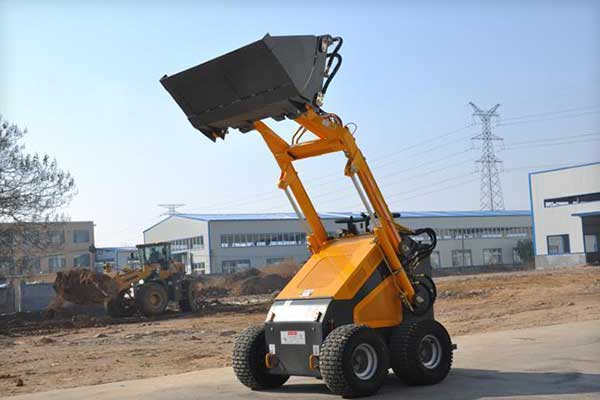How Long Do Mini Skid Steers Last?
Mini skid steers are invaluable assets in various industries, including construction, landscaping, and agriculture. Known for their versatility and compact size, they can perform a wide range of tasks, making them a popular choice for both professional and personal use. One of the most common questions prospective buyers and current owners ask is: “How long do mini skid steers last?” This article will explore the factors that influence the lifespan of a mini skid steer, maintenance tips to extend their longevity, and signs that indicate it’s time for a replacement.

Factors Affecting the Lifespan of Mini Skid Steers
Several factors influence the longevity of a mini skid steer. Understanding these factors can help owners maximize their investment and ensure their equipment performs efficiently for many years.
1. Quality of the Machine
The initial quality of the mini skid steer plays a significant role in its lifespan. Reputable manufacturers use high-quality materials and advanced engineering techniques to produce durable and reliable machines. Investing in a well-known brand might come with a higher upfront cost, but it often pays off in the long run with fewer repairs and a longer operational life.
2. Frequency and Intensity of Use
How often and how hard you use your mini skid steer will directly impact its lifespan. Machines that are used daily for heavy-duty tasks will naturally wear out faster than those used occasionally for lighter work. It’s essential to match the machine’s capabilities with the demands of the job to avoid overworking it.
3. Maintenance and Care
Regular maintenance is crucial to extending the life of any piece of equipment, and mini skid steers are no exception. This includes routine inspections, timely oil changes, filter replacements, and keeping the machine clean. Neglecting maintenance can lead to premature wear and tear, reducing the machine’s overall lifespan.
4. Operating Conditions
The environment in which the mini skid steer operates can also affect its longevity. Harsh conditions, such as extreme temperatures, corrosive environments, and rough terrains, can accelerate wear and tear. Operators should be mindful of these conditions and take appropriate measures to protect the machine, such as using covers or performing more frequent maintenance.
5. Operator Skill and Training
Experienced and well-trained operators are less likely to cause undue stress on the machine. Proper operation techniques can prevent unnecessary damage and extend the lifespan of the mini skid steer. Training operators on the correct use of the equipment is an investment that pays off in terms of reduced wear and longer machine life.

Typical Lifespan of Mini Skid Steers
On average, a well-maintained mini skid steer can last between 5,000 to 7,000 operating hours. This translates to about 10 to 15 years of use for machines operated for approximately 500 hours per year. However, with exceptional care and minimal heavy-duty usage, some mini skid steers can exceed this range and remain operational for up to 20 years or more.
Maintenance Tips to Extend the Lifespan
To maximize the lifespan of your mini skid steer, consider the following maintenance tips:
- Regular Inspections: Conduct daily inspections to check for signs of wear, loose bolts, leaks, and other potential issues. Early detection and repair can prevent minor problems from becoming major ones.
- Adhere to Maintenance Schedules: Follow the manufacturer’s recommended maintenance schedule for oil changes, filter replacements, and other routine tasks. Keeping a maintenance log can help track these activities and ensure nothing is overlooked.
- Use Quality Parts and Fluids: Always use high-quality replacement parts and fluids that meet the manufacturer’s specifications. Inferior products can cause damage and reduce the machine’s efficiency and lifespan.
- Proper Storage: Store the mini skid steer in a dry, sheltered location when not in use. Protecting it from the elements can prevent rust and other damage caused by exposure to moisture and extreme temperatures.
- Operator Training: Ensure all operators are properly trained on the correct use and maintenance of the mini skid steer. This includes understanding load capacities, operating speeds, and safe handling practices.

Signs It’s Time for a Replacement
Despite best efforts, there comes a time when every machine needs to be replaced. Here are some signs that your mini skid steer may be nearing the end of its useful life:
1. Frequent Breakdowns
If the machine requires constant repairs and downtime, it may be more cost-effective to replace it rather than continually investing in fixes.
2. Decreased Performance
Noticeable drops in performance, such as reduced power, slower operation, and increased fuel consumption, can indicate that the machine is worn out.
3. High Operating Hours
Machines with high operating hours, approaching or exceeding the average lifespan, may start to show signs of aging and require replacement.
4. Outdated Technology
Older machines may lack the efficiency and capabilities of newer models. Upgrading to a more modern mini skid steer can improve productivity and reduce operating costs.
Conclusion
The lifespan of a mini skid steer depends on various factors, including the quality of the machine, usage patterns, maintenance practices, operating conditions, and operator skill. By investing in a reputable brand, performing regular maintenance, and training operators, owners can maximize the longevity of their mini skid steer. While the average lifespan ranges from 10 to 15 years, with proper care, these machines can serve reliably for even longer. Keep an eye out for signs of aging and be prepared to replace the machine when it no longer meets performance standards, ensuring continued efficiency and productivity.

